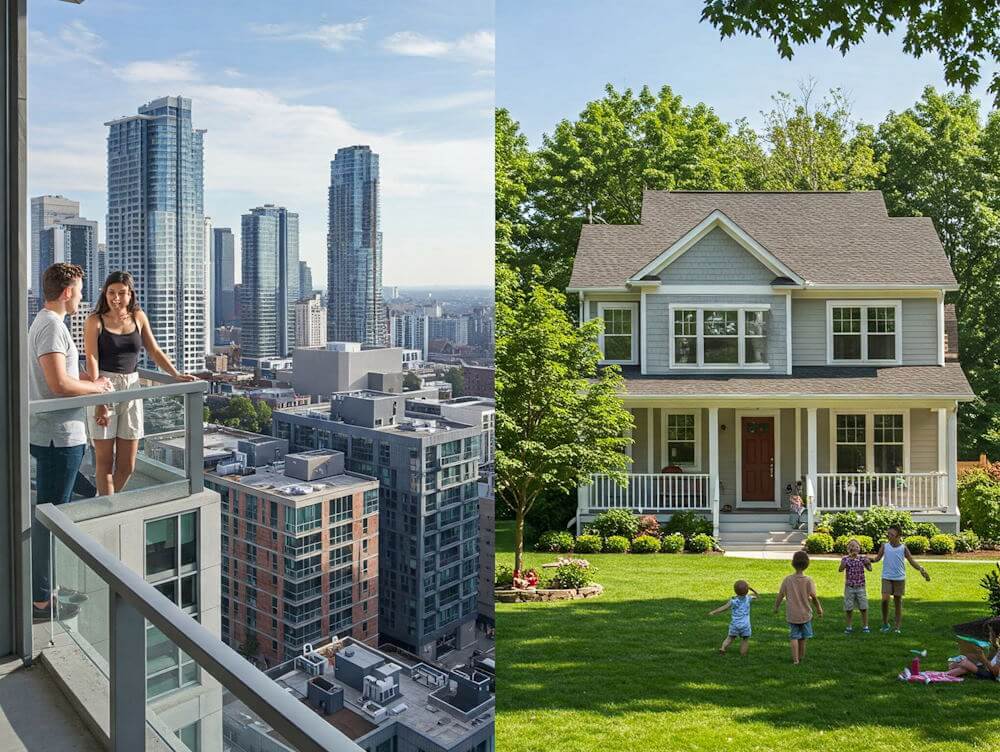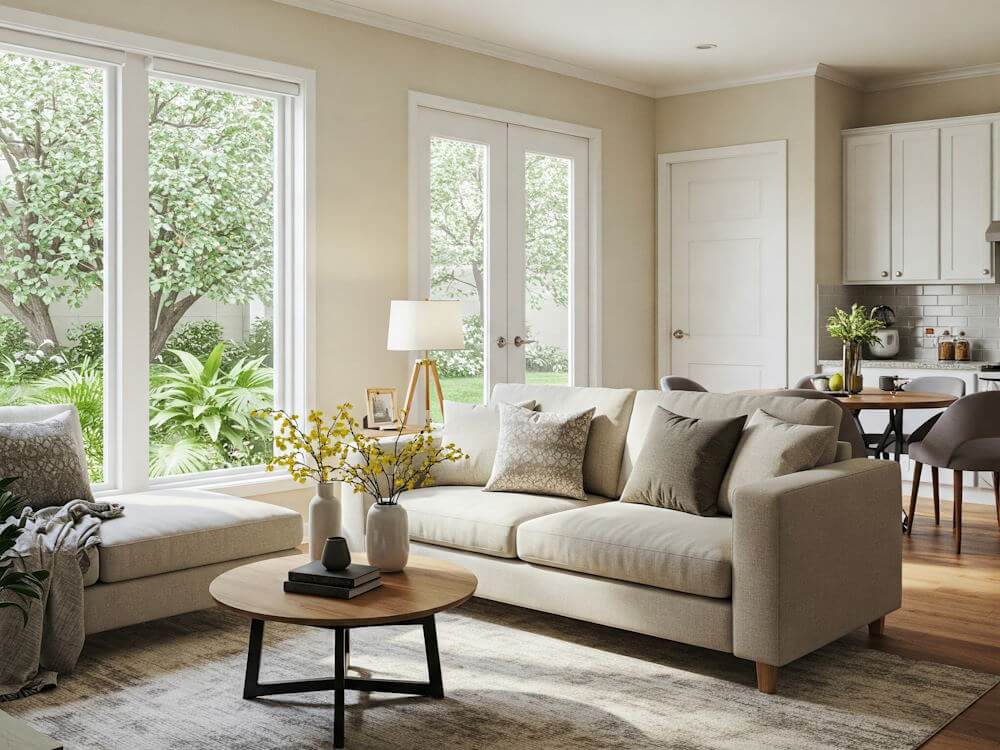Understanding Fixer-Upper Homes
A fixer-upper home is typically defined as a property that requires significant repairs or renovations before it can be deemed livable or functional. These homes may vary in terms of their condition, ranging from minor cosmetic updates to extensive structural and system overhauls. The appeal of purchasing a fixer-upper lies in the opportunity it presents for buyers to invest in real estate at a lower price point. Often, such homes are available at considerably lower prices than their move-in-ready counterparts. This reduced cost is frequently attributed to the perceived risks involved, which could deter traditional buyers.
Common characteristics of fixer-upper homes include outdated fixtures, deferred maintenance, and sometimes, significant structural issues. Buyers should be prepared to assess the scope of necessary renovations, which might involve updating plumbing, electrical systems, or roof repairs. Nevertheless, these homes also offer a unique chance to create a personalized living space tailored to individual tastes and preferences. Homebuyers are often attracted to the idea of customizing their environments, fostering a stronger emotional connection to the property over time.
It is crucial to weigh the potential risks and rewards when considering the purchase of a fixer-upper. On one hand, the possibility of enhancing property value through renovations can yield significant financial returns. On the other hand, buyers must be cautious of budget overruns, unexpected repairs, and the prolonged timelines typically associated with major renovations. A comprehensive assessment, including thorough inspections and careful project planning, is essential in order to navigate the complexities of purchasing a fixer-upper. By understanding the various aspects associated with these homes, prospective buyers can make informed decisions and set realistic expectations for their renovation journeys.
Assessing Location
When considering the purchase of a fixer-upper, assessing the location is crucial to ensuring a successful investment. The geographical area of a property can significantly impact both the renovation decisions and potential resale value. One of the primary factors to evaluate is neighborhood safety. Properties situated in safe neighborhoods tend to attract more buyers, which is essential for maintaining property value over time. An area with a solid reputation for safety can also facilitate a more comfortable living experience for future occupants.
Proximity to essential amenities such as schools, parks, and grocery stores is another vital aspect to consider. Families often prioritize homes located near reputable schools and safe recreational areas for their children. Having access to parks not only enhances the livability of the neighborhood but also contributes to community engagement, which can lead to a greater sense of belonging. Furthermore, buyers often look favorably upon areas that are well-equipped with basic amenities, as this convenience can enhance the overall quality of life.
Another essential factor is the accessibility to public transportation. Properties located near major transit routes or train stations are often more desirable, as they offer convenient commuting options for residents. This is particularly important in urban settings where traffic congestion is prevalent, making proximity to efficient public transport a critical consideration for potential buyers.
Lastly, it is important to be aware of any future development plans in the area that may affect property values. Local government initiatives or private investments aimed at enhancing infrastructure can elevate property worth over time. Understanding the dynamics of the surrounding area, including ongoing and planned development projects, can provide valuable insights that influence renovation choices and long-term investment strategies.
Evaluating Structural Integrity
When considering the purchase of a fixer-upper home, it is critical to evaluate its structural integrity thoroughly. A solid foundation is essential for any dwelling. Begin your inspection by checking for noticeable cracks in the foundation walls, uneven flooring, and doors that do not close properly. These signs can indicate serious foundational issues that may require significant repair costs.
Next, assessing the roof is equally important. Look for missing shingles, sagging areas, and signs of water damage on ceilings and walls inside the home. A deteriorating roof may necessitate complete replacement, which is a substantial financial undertaking. Additionally, while inspecting the roof, examine the attic for signs of water intrusion or inadequate ventilation, as these factors can lead to long-term issues.
The plumbing system is another critical area worthy of inspection. Check for leaks underneath sinks, around toilets, and in visible pipes. Corroded or outdated plumbing can lead to water damage and potential health hazards due to mold growth. If the house has a basement, ensure to inspect it for signs of moisture or flooding, which can indicate serious plumbing problems.
Finally, the electrical systems must be evaluated. Inspect the condition of electrical panels, visible wiring, and outlets. Look for frayed wires, insufficient grounding, or outdated systems that may not comply with current safety standards. An outdated electrical system can result in high repair costs and may pose safety risks.
In conclusion, when evaluating a fixer-upper home for its structural integrity, focus on these key areas. A thorough inspection can help you understand the extent of renovation needed and prepare for any associated costs. Consulting professionals in home inspections can provide additional insights and confirm the findings of your evaluation, securing your investment in the long run.
Identifying Necessary Repairs and Updates
When considering the purchase of a fixer-upper home, it is crucial to thoroughly evaluate both the cosmetic changes and essential repairs that may be required. A comprehensive assessment of the property will enable prospective buyers to prioritize these repairs effectively and manage their renovation budget wisely. The first step in this process is to conduct a detailed walkthrough of the property. During this inspection, pay attention to aspects such as the condition of the walls, flooring, and fixtures, which can indicate the need for cosmetic updates. Fresh paint and new flooring can significantly enhance the aesthetic appeal of a home and may take precedence in a renovation plan.
In addition to cosmetic improvements, it is imperative to identify any essential repairs that may impact the home’s habitability and safety. This includes evaluating the roof, plumbing, electrical systems, and HVAC (heating, ventilation, and air conditioning) components. Issues in these areas can often lead to costly repairs if not addressed promptly. For instance, outdated insulation can impact energy efficiency, resulting in higher utility bills over time. Therefore, ensuring that these systems are functioning correctly should be a priority in any renovation strategy.
Once the necessary repairs are identified, it is important to create a realistic budget that encompasses both immediate needs and future renovations. This budget should consider the costs associated with labor, materials, and unforeseen expenses that may arise during the renovation process. By establishing a strategic renovation plan that addresses both cosmetic and essential repairs, potential homeowners can ensure a smoother transition into their fixer-upper while maximizing their investment in the property. Thus, taking these steps will enable a comprehensive approach to renovating a fixer-upper home effectively.
Budgeting for Renovations
When considering a fixer-upper home, developing a comprehensive renovation budget is essential. This process begins with estimating potential costs associated with both labor and materials. To create a realistic budget, it is advisable to gather quotes from contractors and suppliers. Itemizing these expenses will provide a clearer picture and help avoid any unpleasant financial surprises later on. Common renovation projects include kitchen and bathroom upgrades, roof repairs, and flooring replacements, all of which can vary significantly in cost depending on the scope of work and quality of materials selected.
Additionally, unexpected expenses are often a hallmark of renovation projects. During the initial assessment, certain hidden issues may not be immediately apparent, such as plumbing or electrical problems. It is prudent to anticipate such surprises by allocating an additional 10% to 20% of the overall renovation budget as a contingency fund. This buffer can provide peace of mind and financial flexibility, ensuring you are prepared for any challenges that may arise during the renovation process.
Financing renovations is another critical aspect to consider. There are various options available, including home equity loans, personal loans, or renovation-specific loans. Each of these financing avenues has different terms, interest rates, and eligibility requirements. It is essential to evaluate your financial situation and determine the most suitable option that aligns with your renovation goals.
Furthermore, keeping your renovation budget flexible and revisiting it regularly is vital. As the project progresses, circumstances may change, requiring adjustments to spending. By staying organized and maintaining clear documentation of expenses, you can ensure that your renovations stay within budget, while effectively managing costs and achieving the desired outcome for your fixer-upper home.
Understanding Local Real Estate Market Trends
When considering the purchase of a fixer-upper home, it is vital to have a thorough understanding of the local real estate market trends. This knowledge not only provides insight into current property values but also helps potential buyers identify opportunities and forecast future appreciation rates. Conducting comprehensive research on the specific neighborhood or area where the property is located can greatly influence the decision-making process.
One of the key components to examine is the historical appreciation rates for properties in the vicinity. Understanding how property values have changed over time can help buyers gauge the potential for future growth. For instance, if an area has consistently demonstrated increasing home prices, investing in a fixer-upper there may yield a substantial return on investment after renovations are completed. Conversely, if property values are stagnant or declining, the financial viability of such an investment may be questionable.
Moreover, buyers should take into account various demographic trends that may affect housing demand and, consequently, property values. This includes analyzing factors such as population growth, employment rates, and the local economy’s health. Areas attracting new businesses or experiencing an influx of residents are often associated with rising property prices. Understanding these trends can aid buyers in pinpointing promising neighborhoods that have the potential for investment appreciation.
Lastly, it is prudent to engage with local real estate agents or market analysts who can provide additional insights into neighborhood dynamics. Their expertise can offer a clearer perspective on the impact of local amenities, schools, and infrastructure developments on property values. A comprehensive understanding of the local real estate landscape will equip buyers with the knowledge needed to make informed decisions regarding their fixer-upper home investment.
Assessing the Potential for Value Addition
When considering a fixer-upper home, understanding its potential for value addition is crucial. Certain renovation projects tend to yield a higher return on investment (ROI), significantly impacting the overall value of the property. Consequently, identifying these key projects can lead to more informed decisions when purchasing and renovating a home.
One of the most impactful renovations involves kitchen and bathroom remodels. These areas of a home are not only pivotal for daily living but are also the spaces that potential buyers scrutinize most closely. Modernizing a kitchen with updated appliances, countertops, and cabinetry often results in a substantial ROI. Similarly, enhancing a bathroom with contemporary fixtures and improved aesthetics can significantly elevate a home’s appeal to potential buyers.
Beyond interior upgrades, landscaping improvements should not be overlooked. Curb appeal plays a vital role in attracting prospective buyers and increasing property value. Simple enhancements such as planting trees, adding flower beds, or improving outdoor lighting can create a welcoming atmosphere that enhances the home’s exterior appeal. Furthermore, investing in energy-efficient upgrades, such as improved insulation, modern HVAC systems, and energy-efficient windows, can make a home more attractive and reduce utility costs. This not only aligns with modern sustainability trends but also appeals to a growing demographic of eco-conscious buyers.
Identifying opportunities for value addition requires a keen eye for detail and potential. It is advisable to evaluate properties with structural integrity but dated aesthetics, as they often provide the best return when renovated. Understanding local real estate trends and buyer preferences can also guide decisions on which renovations to prioritize. By focusing on these areas, prospective buyers can enhance the value of their fixer-upper and create a profitable investment that stands out in the market.
Navigating the Buying Process
Purchasing a fixer-upper home can be an exciting yet complex journey. Understanding the buying process is crucial to ensure a successful investment. The first step in finding a fixer-upper is enlisting the help of a qualified real estate agent who has experience with distressed properties. A knowledgeable agent can provide valuable insights into the local housing market and help you identify properties that align with your renovation goals and budget.
Once you’ve found potential homes, the next step involves visiting these properties to assess their condition and potential issues. During showings, take note of critical aspects such as structural integrity, plumbing, electrical systems, and overall layout. This will aid in determining whether the property can meet your needs and budget, and allow you to prioritize repairs or renovations effectively.
After identifying a desirable fixer-upper, the negotiation process begins. Developing effective negotiation strategies is essential when making an offer. Consider the home’s condition, the local market landscape, and the seller’s situation to formulate a competitive yet reasonable offer. Including contingencies for inspections can protect you from unforeseen expenses later on. A thoughtful approach will demonstrate your seriousness while leaving room for adjustments based on inspection findings.
Once your offer is accepted, facilitating a thorough home inspection becomes paramount. Hiring a proficient inspector familiar with fixer-upper properties can uncover hidden issues that might not be apparent during initial visits. The inspection report should guide your renovation budget and timeline. Following this, contingencies based on inspection results can serve as negotiation leverage, allowing adjustments to the purchase price or terms based on required repairs.
Overall, navigating the buying process for a fixer-upper requires diligence, expert guidance, and strategic planning to ensure a successful home purchase. By following these steps, prospective buyers will be better equipped to manage their investments in fixer-upper homes.
Post-Purchase Considerations
After acquiring a fixer-upper, buyers must engage in a series of critical post-purchase considerations that can significantly influence the overall success of their renovation journey. Initially, it is essential to devise a comprehensive renovation timeline. This timeline should account for various phases of the project, from the planning stage to the final touches. Establishing deadlines for each phase can help homeowners maintain focus and ensure that projects are completed in a timely manner, thereby minimizing additional costs related to delayed renovations.
Moreover, assembling a reliable team of contractors is paramount. Selecting qualified professionals who possess experience in renovating older or distressed homes will enhance the quality of the outcomes. Homeowners should vet potential contractors thoroughly, seeking referrals, reviewing past work, and ensuring that they are properly licensed and insured. Collaborating with specialists, such as architects or structural engineers, can also be beneficial, particularly for extensive renovations that may involve significant structural changes.
Another critical aspect involves the procurement of necessary permits. Depending on the scope of renovations, different permits may be required at the local or state level. Failing to obtain these permits can lead to fines, project delays, and potential complications during future property transactions. Therefore, it is vital to research local regulations surrounding home renovations and consult with professionals as needed.
Effective management of the renovation project is essential for a smooth home improvement process. This encompasses regular communication with contractors, ongoing project assessments, and ensuring that budgets are adhered to. Homeowners should remain flexible during the renovation process, understanding that unexpected issues might arise, leading to necessary adjustments in plans. This adaptability will foster a more manageable remodeling experience and contribute to the homeowner’s overall satisfaction with their newly renovated fixer-upper.




